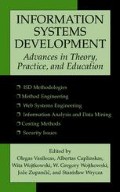Abstract
Multimedia tools are becoming an essential means in human interaction, electronic commerce and markets such as the worldwide web system. This increasing amount of information transmitted via communication channels has to be handled in an efficient manner to avoid congestion and delays in the network service. In this work, a new approach to multimedia data transmission and storage is proposed. One of its basic assumptions is that in many situations the multimedia information could be decomposed into basic components or codewords that represent a significant part of the data. To illustrate the capabilities of the proposed approach, a compression system for video streams is developed and tested. The system is based on the observations that in most multimedia systems, building blocks of recent history of the stream can describe present details of the multimedia information. A straightforward example is taking the background image of a video sequence as a codeword. However, there are more complex codewords such as typical repeated movements in the transmitted image e.g., lip and eye movements of humans in a scene. Experimental results indicate a high compression ratio of more than 100:1, obtaining almost lossless visual reproduction with signal-to-noise ratio higher than 1000:1 (30 db). Unlike MPEG or the like, the proposed approach can be similarly used also for other components in the multimedia stream. Our conclusion is that codewords and codebooks could be very efficient in developing multimedia information systems and transmission methods.
Access this chapter
Tax calculation will be finalised at checkout
Purchases are for personal use only
Preview
Unable to display preview. Download preview PDF.
References
Special Issue on Sequence Coding, IEEE Trans. Image Processing (September, 1994).
C. S. Choi, H. Harashima, and T. Takebe, Analysis and Synthesis of Facial Expressions in Knowledge-based Coding of Facial Expressions in Knowledge-based coding of facial Image Sequences, ICASSP, 1991.
M. Kunt and M. Kocher, Second-generation image-coding techniques, Proc. of the IEEE 73(4), 549–573 (1985).
C. I. Podilchuk, N. S. Jayant, and P. Noll, Sparse Codebooks for the Quantization of Non-dominant Subbands in Image Coding, International Conference on Acoustic Speech and Signal Processing, 1990, pp. 2101–2104
G. T. R. Giunta, Image sequence coding using oriented edges, Image Communication 2(4), 429–440 (1990).
C. I. Podilchuk, N. S. Jayant, and N. Farvardin, 3-D subband coding of video, IEEE Trans. on Image Processing 4(2), 125–139 (1995).
J. W. Woods and S. D. O’Neil, Subband coding of images, IEEE Trans. on Signal Processing ASSP-34(5), 1278–1288 (1986).
M. Porat and Y. Y. Zeevi, The generalized gabor scheme in biological and machine vision, IEEE Trans. on Pattern Analysis and Machine Intelligence PAMI-10(4), 452–468 (1988).
N. Katzir, M. Lindenbaum, and M. Porat, Curve segmentation under partial occlusion, IEEE Trans. on Pattern Analysis and Machine Intelligence PAMI-16(5), 513–519 (1994).
M. Porat and Y. Y. Zeevi, Localized texture processing in vision: Analysis and synthesis in the Gaborian space, IEEE Trans. on Biomedical Engineering BME-36(1), 115–129 (1989).
Y. L. Linde, A. Buzo, and R. M. Gray, An algorithm for vector quantizer design, IEEE-COM 28, 84–95 (1980).
S. Panchanathan and M. Goldberg, Adaptive algorithms for image coding using vector quantization, Signal Processing: Image Communication 4, 81–92 (1991).
G. Goldberg and H.-F. Sun, Image sequence coding by three-dimensional block vector quantization, IEE Proceedings, Pt. F 133(5), 482–486 (1986).
D. Furman and M. Porat, On content-based very low bitrate video coding, The Very-Low Bitrate Video (VLBV) Conference (Madrid, 2003).
Author information
Authors and Affiliations
Editor information
Editors and Affiliations
Rights and permissions
Copyright information
© 2005 Springer
About this paper
Cite this paper
Porat, M. (2005). On Coding and Codebooks in Multimedia Information Systems. In: Vasilecas, O., Wojtkowski, W., Zupančič, J., Caplinskas, A., Wojtkowski, W.G., Wrycza, S. (eds) Information Systems Development. Springer, Boston, MA. https://doi.org/10.1007/0-387-28809-0_22
Download citation
DOI: https://doi.org/10.1007/0-387-28809-0_22
Publisher Name: Springer, Boston, MA
Print ISBN: 978-0-387-25026-7
Online ISBN: 978-0-387-28809-3
eBook Packages: Computer ScienceComputer Science (R0)

